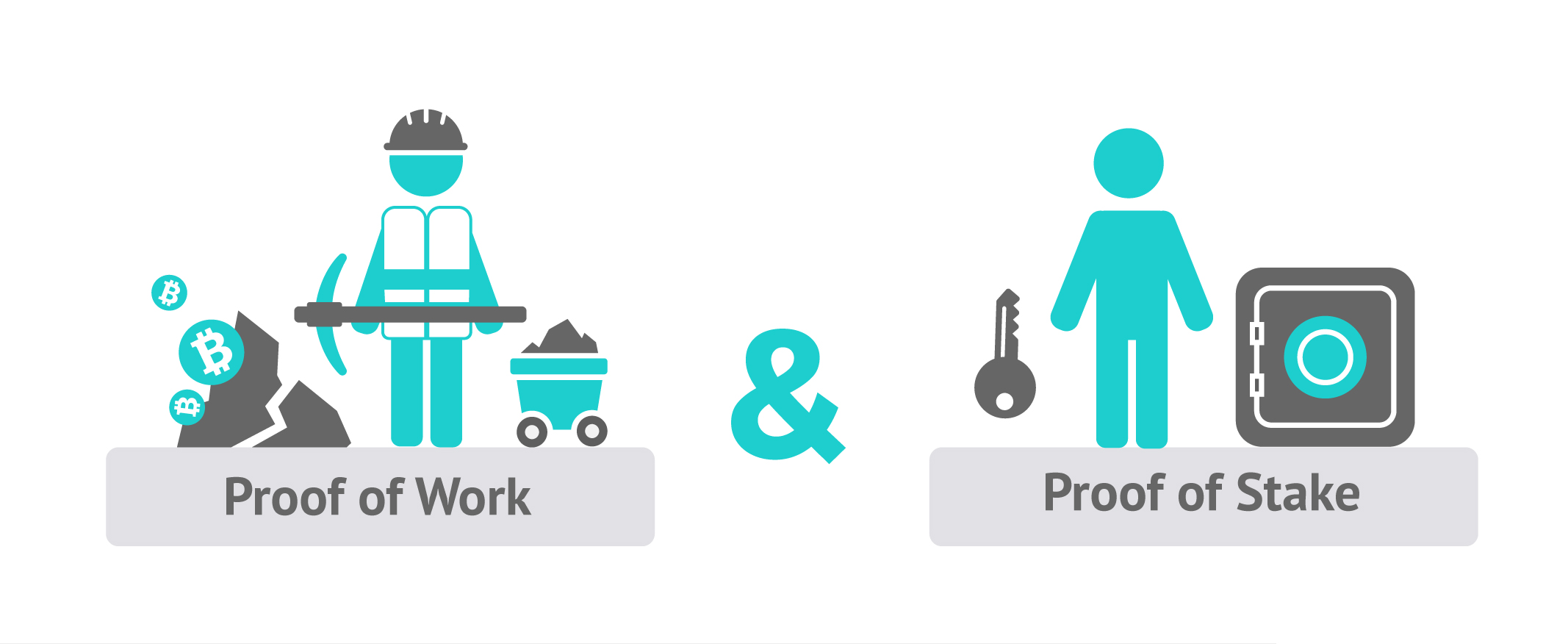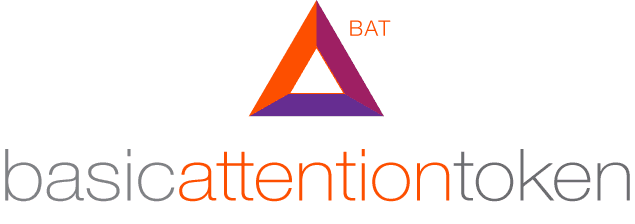
Blockchain technology used in non-cryptocurrency applications
Blockchain is best known for being the technology behind cryptocurrencies like Bitcoin and Ether (the currency of Ethereum), but blockchain is much more than an instrument of finance.
What is the blockchain technology? Basically, it’s an encrypted database of agreements.
Blockchain serves as a bookkeeping platform or ledger that is incorruptible, enforces transparency, and bypasses censorship. By tackling issues of financial, political and institutional corruption, this has the potential to create massive social change—and greatly protect the human rights of every individual.
Blockchain technology is in its early stages and industry insiders are still mulling over the ways in which it can be merged. The possibilities of blockchain are somewhat similar to that of smartphone applications.
Initially, apps didn’t catch on but developers soon realized that it could be designed to suit all sorts of needs – it was just programming. Thereafter, applications became all but a necessity for a business if it was wished to influence the market on a larger scale. Apps also gave developing power and outreach to the individual developer, allowing to them achieve what was often only accessible to larger development teams and resources.
Blockchain will further establish a sense of democracy and equality through its disruptive power. It can create a more level playing field, where individuals and small businesses will be able to compete with corporate powers that have established their dominance through the advantage of money.
Here are some of the domains in which the blockchain technology is or can be used (in non-cryptocurrency applications).
Financial Services
Without a doubt, the most popular application and the launchpad for cryptocurrency into the global economy is the financial industry. The issues with today’s banking systems, which lack inclusion and fairness, have crazy interest rates and transactions are always in favour of financial companies. THat’s why one new customer might be more interested in not interacting with a bank, but trading directing in cryptocurrency.
Individuals are forced into unfair deals. Additionally, there are billions in the world who have no access to a bank at all, which is an even worse circumstance to be in.
Cryptocurrencies and blockchain can universally rectify the situation. With a smartphone and an internet connection, both of which are widely available, anyone can bank, start a business and receive payments. With incorruptible ledgers and no centralized authority for oversight, financial services on the blockchain would place power back in the individual’s hands, offering solutions without exorbitant interest rates and middleman fees. The banking industry even suggests that up to $20 billion can be saved by eliminating infrastructure and middleman costs.
Internet of Things
Along with blockchain and artificial intelligence, the Internet of Things is another technological development that is up and coming, with radically transformative effects.
Essentially an internet connecting all devices, we are soon to live in a world where our smartphones can “talk” to our fridges and cars.
With no central system necessary, blockchain would make this heavy processing much easier to handle while also securing data in an encrypted format. Tokenized mechanisms can monetize transactions between different devices and seamlessly integrate different services. Waltonchain and IOTA (which utilizes Directed Acyclic Graphs, not blockchain) are two of the big names in this niche.
IOTA is shaping up to be a practical, feasible way for machines to communicate with each other. The best way to describe the project is through a potential scenario: imagine driving a car registered on the IOTA network through a toll booth. As you pass through the toll, the car communicates with the toll and automatically makes the transfer. We live in a world that is increasingly dependent on machines, so you can imagine the potential of a system that automatically executes those dependencies.
Hurify is another project in the IoT space that aims to accelerate the growth of the industry. The platform allows developers to find IoT development jobs and improve their skill set more easily. Clients can find the right talent for their IoT projects and lower their overall costs.
Samsung and IBM are also working together to this end, on a blockchain initiative called ADEPT.
Digital Identity
Just imagine never having to worry about your digital security ever again.
Which is now estimated to cost the industry about $18.5 billion annually, according to a report released by Distil Networks.
Blockchain technologies makes tracking and managing digital identities both secure and efficient, resulting in seamless sign-ons and reduced fraud.
Be it banking, healthcare, national security, citizenship documentation or online retailing, identity authentication and authorization is a process intricately woven into commerce and culture worldwide.
The data breach at Target was significantly broader than originally reported: The company said that 70 million customers had information such as their name, address, phone number and e-mail address hacked in the breach.
Events such as hacked databases and breached accounts are shining light on the growing problems of a technologically advanced society, without outpaced identity-based security innovations.
Blockchain technology offers a solution to many digital identity issues, where identity can be uniquely authenticated in an irrefutable, immutable, and secure manner.
Current methods use problematic password-based systems of shared secrets exchanged and stored on insecure systems. Blockchain based authentication systems are based on irrefutable identity verification using digital signatures based on public key cryptography. In blockchain identity authentication, the only check performed is whether or not the transaction was signed by the correct private key. It is inferred that whoever has access to the private key is the owner and the exact identity of the owner is deemed irrelevant.
Blockchain Identity Use Cases
Blockchain technology can be applied to identity applications in the following areas:
- Digital Identities
- Passports
- E-Residency
- Birth Ceritificates
- Wedding Certificates
- IDs
- Online Account Login
Apartment Rentals/Real Estate
Long-term rental is the norm for the younger generation. Young working adults are in desperate need of a solution that makes housing arrangements simple and as efficient as possible, preferably without any third-party involvement.
The young minds behind Rentberry, a blockchain-based renting solutions platform, have faced the problems themselves: outdated renting platforms, unrecoverable security deposit, bidding wars with other and endless paperwork.
The Rentberry platform employs smart contracts to make finding and renting out a house seamless. Because it directly connects landlords with tenants, it removes brokers and their exorbitant fees from the rental equation. It is also easier for potential tenants and landlords to screen each other, make decisions, establish financial terms and offer payments, because of the auto-enforcing nature of smart contracts.
Like Rentberry, Atlant uses smart contracts to guarantee rental agreements so that neither parties can back out. Atlant turns its focus slightly more towards property purchasing. Sellers can list their property assets on the blockchain and, once verified, tokenizes the property value. It then takes the form of a Property Token Offering, where buyers can buy the property. The tokens of this particular purchase can be traded on a decentralized exchange.
Beetoken is yet another project in the property space. They aim to establish a P2P network of hosts and guests – like Airbnb but on blockchain. Users are assured security through KYC processes. Services like Airbnb do face the problem of fake reviews and such an issue is remedied by blockchain’s immutability and trust.
Healthcare
Healthcare is a pillar of any national economy. In America, it contributes to a fifth of the national economy, which amounts to roughly $3.8 trillion. Unfortunately, the industry is difficult to modernize on a large scale and is hindered by obsolete processes, legacy data management systems and outdated infrastructure.
Patient data is a crucial part of the medical industry. Secure storage and data access, which could protect and make an efficient diagnosis, is possible with blockchain. There are possibilities for the healthcare industry to partner with tangential services of other industries, such as insurance. ICON (ICX) is working on creating an ecosystem where this kind of inter-industry collaboration can exist.
The existence of legacy systems is especially noticeable in developing nations, which are many steps behind their developed counterparts. Blockchain could quickly bring these nations up to speed, rapidly modernizing their healthcare services, which would better patient healthcare and generate revenue.
Patientory, which raised over $7 million in 3 days in their ICO, aims to improve the healthcare space by offering a secure space for stakeholders to store and manage data. Their target audience is patients, providers and healthcare organizations. Patients can easily access their data and hand it over to providers, who may not have a complete history of the patient’s health but will be able to view notes from previous providers and organizations.
DokChain aims to provide cheaper and more efficient solutions to patient data processing. They are operating on a slightly larger scale, developing a platform for a broader range of industries including insurance.
Gem and Tierion are two other blockchain projects working in the healthcare space.
Insurance
Insurance policies are approved through the verification of the insured party’s data. The approval of insurance and payout of claims are still severe pain points for the industry.
InsureX (IXT) markets itself as an alternative marketplace for insurance. The insurance market has several layers of intermediaries, making approval a frustrating chore. InsureX’s goal is to encourage new business models, increase transaction speed and insurance approval, reduce risk through better data access, and improve customer experience.
Etherisc is an insurance platform that puts an emphasis on decentralized applications. They already have a few dapps up and running, including crop insurance, social insurance and flight delay. Crop insurance protects the insured party against drought or flood, social insurance is similar to life insurance and the flight delay dapp issues policies and pay out claims against flight delay delays autonomously. They will host a marketplace for the capitalization of risks and insurance related services. In other words, what other marketplace-based projects are doing for computer resources, dapps and digital identity, Etherisc is doing for insurance.
Machine learning can also be integrated with smart contracts, as it is being done with SafeShare. This project has partnered with Vrumi to protect property owners against damage and theft to their homes caused by tenants registered on the Vrumi platform. SafeShare employs MetroGnoma, an open-source timestamping service, to validate claims in real time.
Publishing
An example of a rather unexpected application of blockchain, the publishing industry too can benefit from decentralization.
Today’s publishing industry is largely in the control of a small group of publishers. It can be difficult for a yet unrecognized writer to break into the industry. Digital publishing and the internet has made it easier for writers but even then, the scale and recognition of traditional publishing is still lacking.
A platform like Authorship is set to overturn the current system, where influence is in the hands of publishers, by using a tokenized system that recognizes the work of any writer. Publishers can choose to digitally publish writers and print their books, should they feel convinced of their quality and should demand exist. The token system ensures that writers get their fair share of pay. Writers can also write and publish without the assistance of publishers. Translators will also receive payment and approval from publishers if they choose to translate a work.
The lesson here is, in whatever industry financial mechanisms favour one party over the other, blockchain can come in to equalize the system and ensure that everyone gets their fair cut.
Music
Like publishing which favours publishing companies, the music industry is also unfairly structured in favour of recording labels.
Musicians have frequently derided streaming services, stating that they have siphoned a lot of earnings away from them. This is sadly true, but we have crossed the point of no return in this matter. Streaming is the way of the future but it behoves us to ensure artists earn their fair share of royalties.
Much of the earnings from music sales go to recording labels. Some musicians have therefore directly released their albums to fans. Thom Yorke and Nine Inch Nails have released their albums on P2P networks, and Bjork has even permitted fans to pay for her album Utopia with cryptocurrency.
Blockchain now allows fans to connect directly with artists in a manner that is efficient and secure.
Two popular blockchain startups operating in this space are Mycelia and Ujo Music.
There are a number of ways in which Mycelia could benefit artists. Imogen Heap, who founded Mycelia, wrote she believes blockchain can help license copyrighted music in an easy manner that suits both the requestor and the artist.
A noteworthy element of Mycelia’s platform is the “creative passport”, which serves as a record of an artist, their works, tour dates – it is very social media-like, all but a necessity for artists today.
Ujo Music has also received the backing of Imogen Heap. With their “Creator’s Portal”, artists can publish, license and be compensated for their work through Ethereum. It will also make it easier for artists to be discovered and supported by the community. Voise, a platform that has a concentrated focus on streaming, operates with similar intentions.
Supply Chain Management
The supply chain industry is one fraught with many challenges, most of which are concerned with curtailing rising costs and efficiently supplying products to retailers and customers. It is valued in the hundreds of billion dollars worldwide and is set to grow as demand increases proportionally with spending power.
However, the industry faces several obstacles. Fuel costs are ever on the rise, overproduction of products wastes precious resources, as well as taking up space and eventually becoming harmful waste. It is an industry whose challenges affect our very planet.
Smart contracts offer a potential solution to this problem. Imagine if an industry as significant as the automobile industry utilized a system in which cars would be manufactured only when a fixed number of requests were received.
With smart contracts, it is possible for funds to be locked into a contract, whereupon manufacturers would begin production only after a certain number has been reached. It would eliminate the worry of overestimating demand and resource consumption, and could also eliminate middlemen by directly connecting consumers with manufacturers.
VeChain and ShipChain are two blockchain projects that want to transform this industry.
VeChain aims to establish a business ecosystem that is autonomous and self-circulating. The use of NFC chips to counter theft and fraud has been popular with markets like liquor and tobacco, and they have partnered with China’s National Research Consulting Center (NRCC) to this end.
ShipChain is also striving for the same goals with its platform, with its solution of “track and trace” being implemented from end to end on shipping and logistics. This will let small carriers operate independently and shift reliance away from larger, better-financed shipping parties. ShipChain is also incentivizing operators by rewarding them for efficient transport routes and timely deliveries.
Government
In many parts of the world and, even in America which has long been held as the gold standard for democracy, voting power is manipulated and contorted to favour parties or even certain individuals. Nowhere is the principle of “one individual, one vote” more desired than in political voting systems.
Democracy Earth has created a peer-to-peer governance protocol for organizations. Budgeting takes place with bitcoins and smart contracts, and only you, the voter, have access to your voter information.
Horizon State is oriented towards actual voting for the purposes of governance. The platform allows for immediate recognition of votes at a fraction of the cost of traditional voting systems. The tokens of the platform are used as the ‘gas’ for voting and other services, which includes funding for campaigns.
Boule is another voting platform that is similar to Democracy Earth and Horizon State in its basic purpose.
Cloud Computing/Distributed Computing
Computing power is quickly becoming a fundamental necessity, like electricity and the internet. Many of the tasks that we do today, and certainly those in the scientific and entertainment industries, require heavy computation. The trouble is that it requires resources that are currently only accessible to major corporate powers who have the funds to operate powerful systems.
The distributed nature of blockchain changes that, as it lets any user across the world utilize the computing power of ordinary computers to perform computationally-intensive tasks. Golem Network is working on precisely this, letting people rent out idle computing resources like bandwidth and processing power to others who can use it to render CGI and perform scientific calculations.
SONM (Supercomputer Organized by Network Mining) targets similar goals. Distributed computing will let users offer their idle computing resources for general purpose computing. SONM also envisions the use cases of video rendering and scientific processes like DNA analysis.
Elastic is an open-source P2P platform that works on a proprietary language called ElasticPL. The key difference here is that users are able to model their problems with the programming language.
Distributed cloud storage
Blockchain data storage will become a massive disruptor in the near future. (3-5 years)
Current cloud storage services are centralized — thus you the users must place trust in a single storage provider. “They” control all of your online assets.
On the other hand with the Blockchain, this can become decentralized. For instance, Storj is beta-testing cloud storage using a Blockchain-powered network to improve security and decrease dependency. Additionally, users can rent out their excess storage capacity, Airbnb-style, creating new marketplaces.
Anyone on the internet can store your data at a pre-agreed price. Hashing and having the data in multiple locations are the keys to securing it.
There are at least 2 start-ups exploring this idea. After encrypting your data, it is sent out to a network with easy to track basic metadata.
Decentralized notary
One interesting feature of the blockchain is its timestamp feature. The whole network essentially validates the state of a wrapped piece of data (called a hash) at a certain specific time.
As a trustless decentralized network, it essentially confirms the existence of [something] at a stated time that is further provable in a court of law. Until now, only centralized notary services could serve this purpose.
Manuel Aráoz, a Buenos Aires, Argentina-based developer, who built Proof of Existence as a decentralized method of verification, a kind of cryptographic notary service explained:
“As the blockchain is a public database, it is a distributed sort of consensus, your document becomes certified in a distributed sort of way.”
Proof of Existence allows users to upload a file and pay a transaction fee to have a cryptographic proof of it included on the bitcoin blockchain. The actual file is not stored online and therefore does not risk unwanted publication of the user’s material.
After anonymously uploading the document and paying the network fee, a hash of the document (or any other type of digital file) is generated as part of the transaction.
The Proof of Existence website shows recently uploaded files that have hashes on the blockchain.
This, in effect, uses the public and ledger-like nature of the blockchain to store the proof of your file, which can later be verified should an issue of authorship or dating arise.
“Basically, by inserting the cryptographic hash of the document in a transaction, when that transaction is mined into a block, the block timestamp becomes the document’s timestamp,” said Aráoz.
Smart contracts
What if you could cut your mortgage rate, make it easier to update your will?
The world of smart contracts is fast approaching.
These are legally binding programmable digitized contracts entered on the blockchain. They are smart because they are automated and can self-execute. What developers do is to implement legal contracts as variables and statements that can release of funds using the bitcoin network as a ‘3rd party executor’, rather than trusting a single central authority.
For example, if two people want to exchange $100 at a specific time in future when a set of preconditions are met, the conditions, payout and parties’ details would be programmed into a smart contract. Once the defined conditions are met, funds would be released and sent to the appropriate party as per terms.
By giving computers control over contracts, we can make business more efficient and make the legal system more equitable.
“Smart contracts solve the problem of intermediary trust between parties to an agreement, whether that is between people transferring assets like gold, or executing decisions between two parties in a betting contract,” explained Vitalik Buterin, a founder of Ethereum.
Platforms like Ethereum are bringing smart contracts closer to reality. Additionally, because data stored in the Blockchain cannot be tampered with, basic contracts like marriages have already been recorded in code.
Digital voting
The greatest barrier to getting electoral processes online, according to its detractors, is security. Using blockchain, a voter could check that her or his vote was successfully transmitted while remaining anonymous to the rest of the world.
In 2014, Liberal Alliance, a political party in Denmark, became the first organization to use blockchain to vote. With American voter turnout still shockingly low, distributed digital voting may represent a way to enfranchise non-participants.
“Many states use voting machines that are over 10 years old that are not only antiquated and failing, they are also becoming increasingly expensive to maintain as parts are no longer manufactured. Election fraud undermines the very fabric of democracy.” -BTC
Last year a team accredited to observe the 2013 municipal elections in Estonia – the only country to run Internet voting on a wide scale – revealed that they observed election officials downloading key software over insecure Internet connections, typing PINs and passwords in view of cameras, and preparing election software on insecure PCs.
Norway also cancelled trials of e-voting systems in local and national elections, concluding that voters’ fears about their votes becoming public could undermine democratic processes. (Source: A security analysis of Estonia’s Internet voting system by international e-voting experts.)
Just imagine a society where your vote is guaranteed from the comfort of your phone.
Can you imagine how the landscape of the political system would change?
Blockchain technologies will become the gold standard for all nations of the world in the near future. It is time for our system and governments to become more transparent.
Charity
Charitable organizations purportedly use the funds they receive to benefit the cause they are supporting. However, in more than a few cases, the money is misspent or outright corruption occurs.
Blockchain’s ability to transparently showcase transactions on its public ledger makes it ideal for use in charities. The public, donating their hard-earned money for a good cause, can see how and where their donations are being spent.
There are several blockchain projects operating in this niche. Alice is a project that aims to help cash-strapped social endeavours through its blockchain-based crowdfunding platform. Giveth is an open-source, Ethereum-based platform that is similar to Alice, but also features a mechanism called LiquidPledging. This is when a donation is made via a delegate. Likewise, AidCoin is another platform that is aiming to make charity donations more transparent and immediate.
Energy
The energy industry is also hampered by middlemen. Blockchain technology could change that by letting individuals buy and sell energy through smart contracts. The energy used by individuals in homes could form a microgrid where communities become resilient to power outages, as well as reduce the drain on the environment.
This is exactly what LO3 Energy has done by establishing the Brooklyn Microgrid. The company itself states it best – they want to reimagine how power can be generated, conserved, traded and shared.
Power Ledger claims to be the world’s first commercially-available energy trading platform of its kind. Users can trade electricity with each other and receive payment in real time. What’s interesting is that users can sell power that they’ve stored on their solar panels. Any excess power that isn’t essential could be sold for money.
Grid+ works with Artificial Intelligence to study your energy consumption pattern and purchase energy accordingly. This platform involves a hardware unit. The AI-based smart energy agent has access to multiple energy markets and can also extra energy generated from solar panels.
Job Marketplaces
For a while now, the systems of employment have been changing. Studies have shown that employees, along with demands for good pay, wish for flexibility with work and the freedom to work from home. Employers have begun to take note that the mindset of employees and their criteria for happiness have changed while other studies have noted that the happiest employees are the ones who perform best.
Freelancing has grown immensely in popularity. While professionalism has grown on both sides, trust always remains an issue because there is currently no way to enforce it.
Blocklancer wants to change that. The platform is essentially a freelance job portal where clients and freelancers can interact. Through the power of smart contracts, both parties are assured of their requested services. It is the freelancing portal freelancers love, but with the assurance of pay and delivery of work.
Are there other use cases of blockchain technology? YES.
Messaging, Blockchain-as-a-Service, Digital Advertising, Credit, Trading, Fishing, Hedge funds, Ridesharing, Crypto exchanges, Human resources, Gaming. There are all fields in which we can use blockchain applications.
As mentioned above, most of these applications are still underdeveloped. The future potential of the blockchain applications is still unravelling. The next couples of years will be all about experimenting and applying to all aspects of society. Regardless of which application comes first on a global scale. The bottom line is, Blockchain is here to stay and will and is transforming how our society functions. Caught your interest? Then find out right now how you can earn free cryptocurrency.












